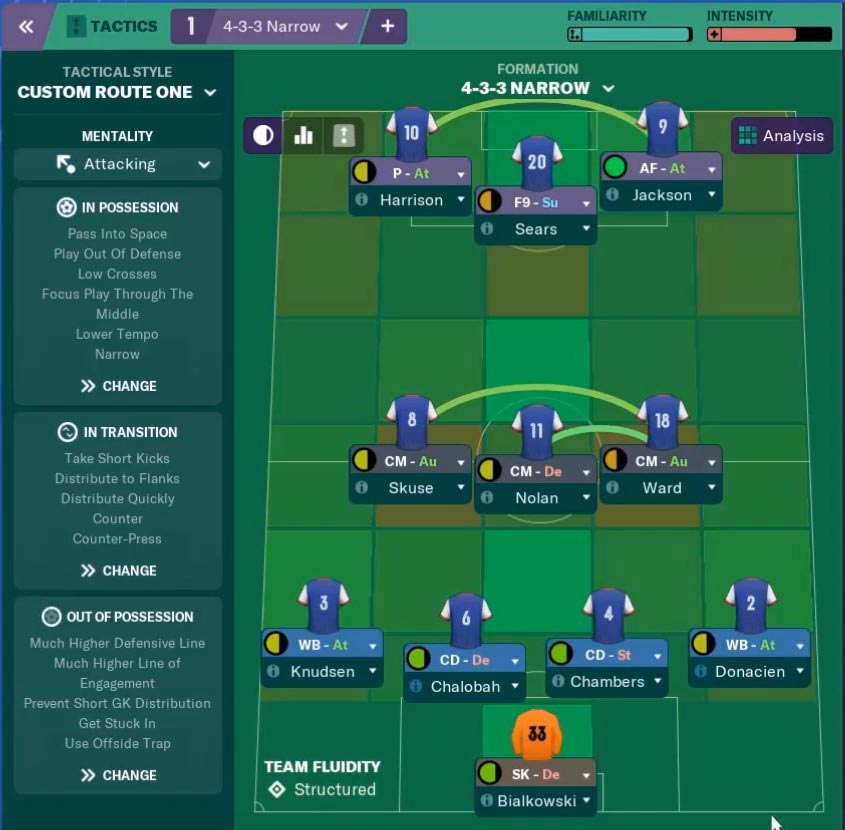
Playing the same tactic all game in the belief that because your players are superior you will inevitably win and/or failure to recognise and change your tactics when things are obviously going against you will not bring you titles. The same applies to in-match management in Football Manager. They may not be recognisable to the casual viewer but they happen nonetheless. The extent to which these tactical changes work defines the course of the match. When discussing tactical instructions, we will talk about them in the context of a single unspecified formation.Ĭhanging Tactics: No team ever goes through a match without some switches in tactical strategy.
#Fm 2008 tactics 4 4 2 full#
In an away formation, they may be asked to tuck in, support the full backs, and be ready for quick breaks when the potential reward outweighs the risk.įootball Manager Tactics: When designing tactics, one slider tweak alters the tactical instruction but not the overall formation. In a home formation, the wingers may hug the touchline, support the attackers and be given a fair degree of creative freedom. A 4-4-2 at home will differ heavily from a 4-4-2 away. Likewise, a 4-3-3/4-5-1 formation has four defenders, one defensive midfielder, two central midfielders, two wingers and a centre forward.ĭefinition of Tactics: Tactics operate within the formation framework. a 4-4-2 has four defenders, four midfielders and two attackers. That's the main mechanics of the tactic, now we'll look at it in FM.There are five important definitions and beliefs that underlie TT&F.ĭefinition of Formation: A formation is the basic framework deciding the position of each player, i.e. Once the ball is won though, we will activate our counter-attack, where, we are most dangerous. We will aim to try and keep our defensive shape through player roles and not leaving our positions to close down or mark tight our opponents. We won't counter-press, neither regroup as that may invite too much pressure. So in an attempt to not highlight our weakness, we won't be overly aggressive in trying to win the ball back. Such as a gap between the wide players if the attacking wingers are caught too high and we could be overrun in midfield when playing against a 4-3-3 for example, with 3 midfielders.

They will be supporting the midfield and wingers, rather than overlapping and hitting the byline.Ī 4-2-4 will come with weaknesses. The full-backs also have similar jobs in trying to keep a defensive shape.

One, the box to box midfielder, will attempt to support the attack by lurking around the edge of the box and even dribbling to bring the ball forward but not with the greatest intent and his partner will look to shield the defence, rarely getting forward and breaking up play. The 2 midfielders in the middle have a job in trying to keep some shape for the team.

The crossing will also be key to creating chances, so once the ball is in the wide areas, we attempt to get bodies inside the box. The wingers also force the AI to defend wider once the ball is in those areas, that's when the strikers and box to box midfielder can exploit space by moving into channels or between the two CBs. Naturally, the wingers will attempt to get the ball to be played out wide, but if that option is not on, we can use a more central route (the DLF) to then get the ball out wide. This allows us to attack and counter in different ways instead of stick to one direction.

Due to only having one of our central midfielders supporting the attacks, the Deep-Lying forward will always try and ensure there's a link between midfield and attack. Alongside the Advanced Forward, who will be the main source of goals, he's partnered with a Deep-Lying Forward. The front 4 will attempt to give you very direct attacking options, as the wingers stretch the pitch and look for a pass in their path and so to the main-goal scoring striker. Attack & goals is simply the idea or main attacking principle of this tactic.


 0 kommentar(er)
0 kommentar(er)
